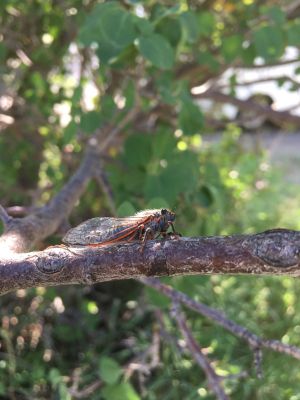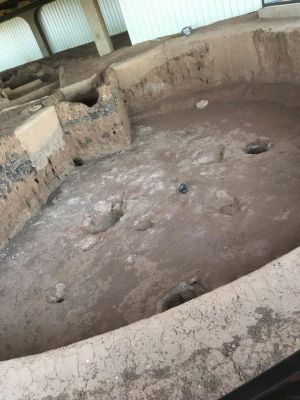Hidden Wonders

Ben Reichenbach is a senior molecular biology major and theater minor. He wrote the following reflections from Mesa Verde. The first thing that I noticed when we entered our campsite at Mesa Verde National Park was a chorus of almost mechanical clicking sounds coming from the trees growing around our campsite. Upon further investigation to the source of the sounds it became clear that they were coming from a multitude of small cicadas— cicadas that were surprisingly much smaller than those we see in Indiana, though no less loud. Because they were so small, they were difficult to locate around the branches of the low-growing oak trees despite being loud enough to hear from yards away. It is clear that there are hidden wonders in this land— hidden, of course, only to the extent that we are willing to learn and look.
After our first night of camping out in the oak clearing (a night that begin with helicopters and planes moving back-and-forth to deal with a fire that had started over the mountains a number of miles from our campsite, and ended with a slow transition from clear skies to thunderstorm conditions) we made our way over the winding roads to the trailhead for a few observational hikes past ancient Puebloan dwellings. We had learned something about these dwellings in two courses we took before embarking on this trip that touched on the history and culture of this area. As such, we had studied examples of the dwellings we came to observe; each Kiva had its signature fire blockade to guide the smoke out from the fire pit, the chimney hole, floor drum, and sipapu, a fist-sized hope in the floor representative of the passage the ancestral Puebloans took from the old world to this world.
As we set out on the trail to the first ruins–a place named Step House–we spoke to a park ranger about the sipapu’s significance. According to Hopi legend, the ancestral Puebloan peoples exited from the third world to the fourth (this world), climbing up the reeds of tall grasses. The sipapu is a representation of the passage through which their ancestors emerged into the sacred land. To this day, some Hopi gather in the Kiva, sitting in a circle with their community and kin around the sipapu to honor the ancestors. As such, the park ranger mentioned, each Kiva becomes a vessel for memory. No matter where one is, the existence of the sipapu in every Kiva allows for those memories and ancestral connections to be preserved for future generations. The preservation of the sipapus in these ruins are another hidden wonder of this land—a continuation of living memories. We continue to explore and enjoy the spaces established before our time that hold such powerful memories, hidden in the openings to new worlds and in the calls of cicadas nestled in oak trees.





